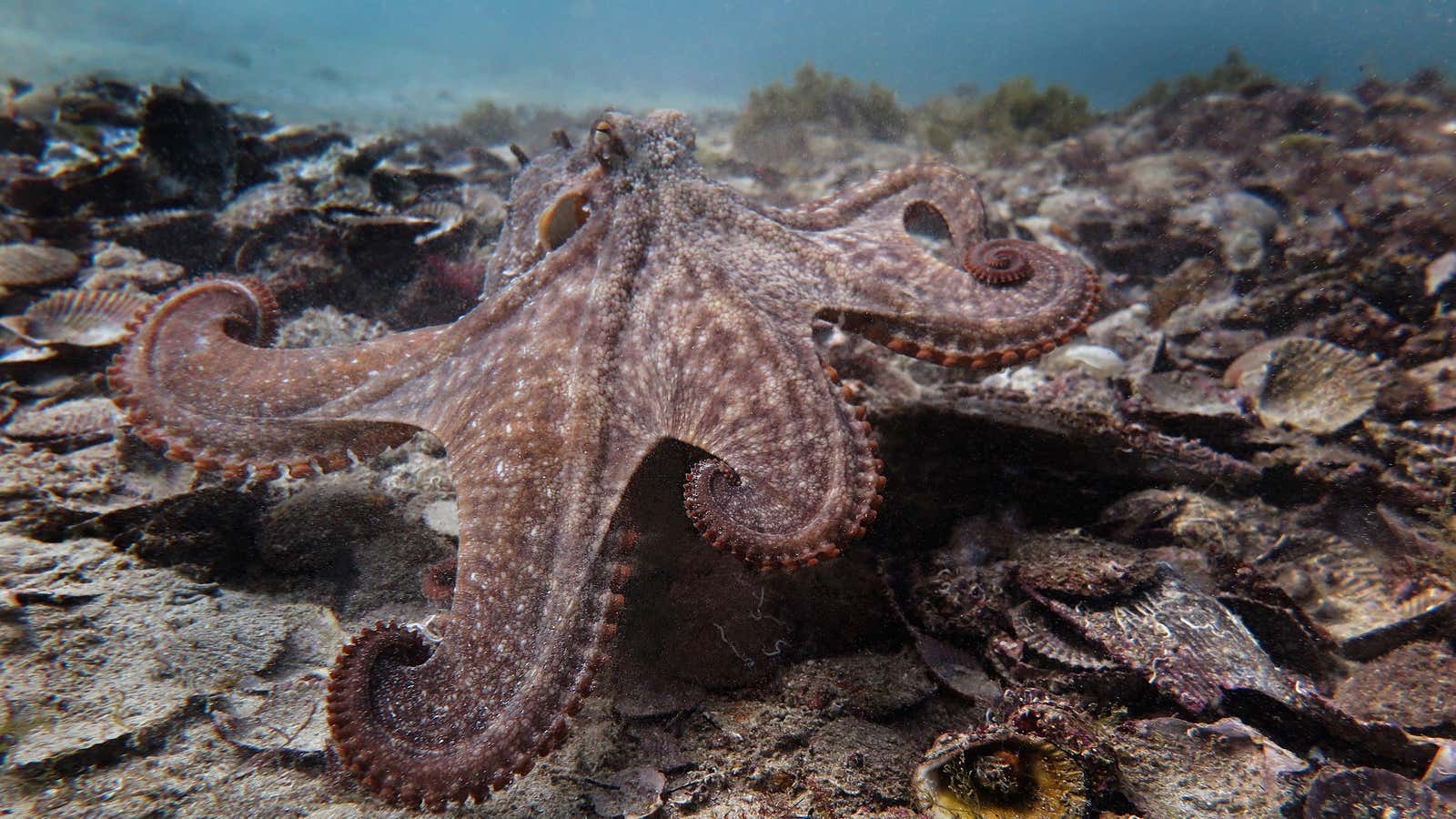Octlantis is a just-discovered underwater city engineered by octopuses
Gloomy octopuses engineer small cities where they can hang out together

Gloomy octopuses—also known as common Sydney octopuses, or octopus tetricus—have long had a reputation for being loners. Marine biologists once thought they inhabited the subtropical waters off eastern Australia and northern New Zealand in solitude, meeting only to mate, once a year. But now there’s proof these cephalopods sometimes hang out in small cities.